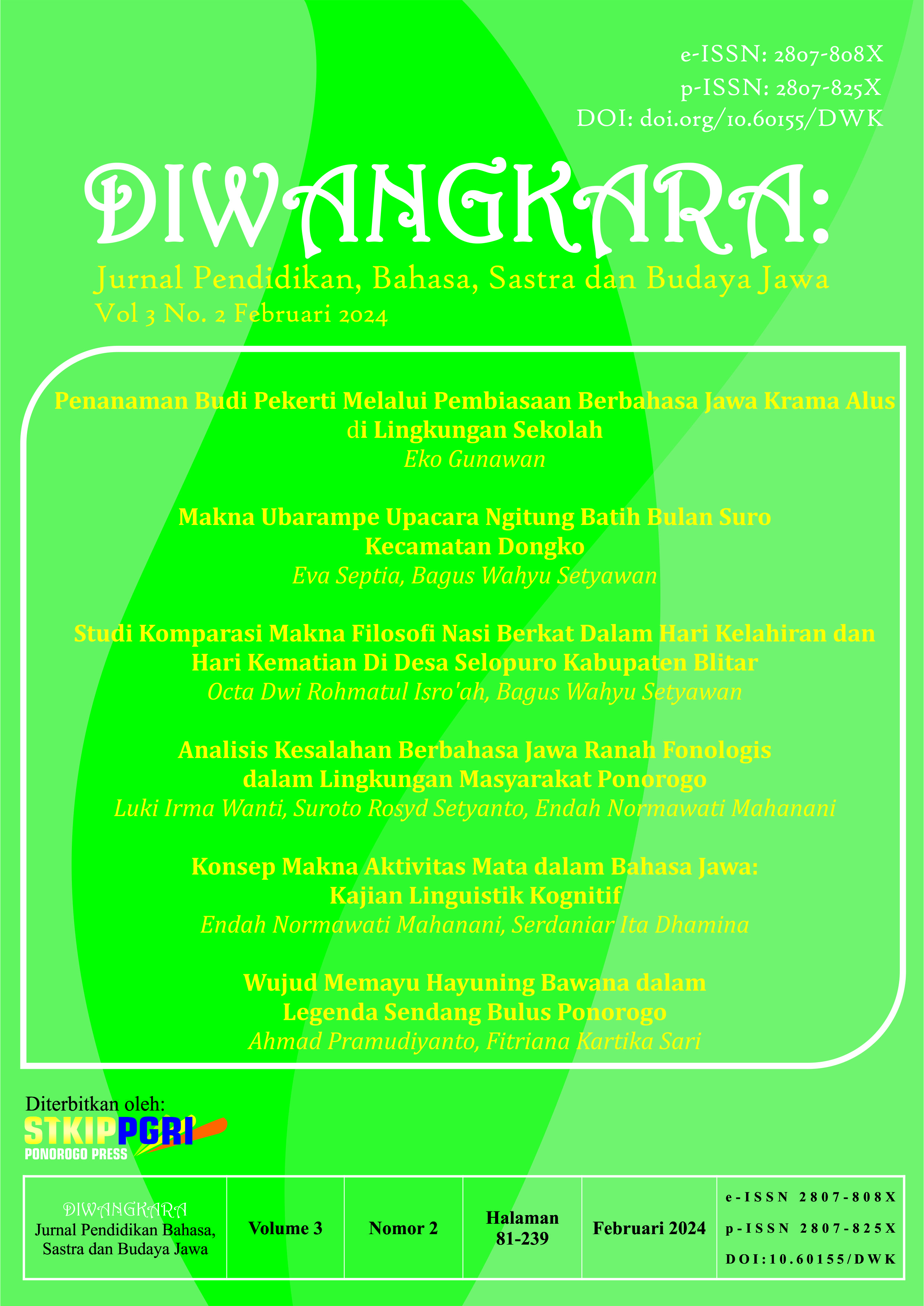Comparative Study of the Meaning of the Philosophy of Blessed Rice on Birth Days and Death Days in Selopuro Village, Blitar Regency
DOI:
https://doi.org/10.60155/dwk.v3i2.369Keywords:
Tradisi, Nasi Berkat, Kelahiran dan KematianAbstract
This research discusses the tradition of sharing blessings in the context of birth and death in Selopuro Village, Blitar Regency, East Java. Using a comparative approach and qualitative methods, this research compares the philosophical meaning of blessing rice filling at birth and death ceremonies. The research location was chosen because Selopuro Village shows a unique diversity in rice blessing fillings. The results showed significant differences in rice filling thanks between the two events. At birth ceremonies, there are restrictions on the presence of apem, the presence of foreskin or urap-urap, fried chili sauce that is not too spicy, boiled cassava, and rujak uyub. Meanwhile, at the death ceremony, the presence of apem and buceng pungkur were found. The symbolism and philosophy in each food element reflects the values of life, morality, and preparation for the afterlife. The connection between symbols and life values is reflected in boiled cassava as a symbol of hard work and rujak uyub as a representation of the color of life. Harmony in death rituals is reflected in the use of apem and buceng pungkur. This research
provides a deep understanding of the rich culture and spirituality of the Selopuro Village community. Every food tradition is not only part of cultural heritage but also a medium for conveying moral and philosophical messages.











